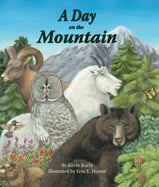Alignment to Standards for CA

| Grade | Number | Standard |
|---|---|---|
| 1 | 1 S LS--2 | Plants and animals meet their needs in different ways. |
| 1 | 1 S LS--2.a. | Different plants and animals inhabit different kinds of environments and have external features that help them thrive in different kinds of places. |
| 1 | 1 S LS--2.c. | animals eat plants or other animals for food and may also use plants or even other animals for shelter and nesting. |
| 2 | 2 S LS--2.c. | many characteristics of an organism are inherited from the parents. Some characteristics are caused or influenced by the environment. |
| 3 | 3 S LS--3 | Adaptations in physical structure or behavior may improve an organisms chance for survival. |
| 3 | 3 S LS--3.a. | plants and animals have structures that serve different functions in growth, survival, and reproduction. |
| 3 | 3 S LS--3.b. | examples of diverse life forms in different environments, such as oceans, deserts, tundra, forests, grasslands, and wetlands. |
| 3 | 3 SS 1) | physical and human geography and use maps, tables, graphs, photographs, and charts to organize information about people, places, and environments in a spatial context. |
| 3 | 3 SS 1)1 | Identify geographical features in their local region (e.g., deserts, mountains, valleys, hills, coastal areas, oceans, lakes). |
| 4 | 4 S LS--2.b. | producers and consumers (herbivores, carnivores, omnivores, and decomposers) are related in food chains and food webs and may compete with each other for resources in an ecosystem. |
| 4 | 4 S LS--3 | Living organisms depend on one another and on their environment for survival. |
| 4 | 4 S LS--3.a. | ecosystems can be characterized by their living and nonliving components. |
| 4 | 4 S LS--3.b. | in any particular environment, some kinds of plants and animals survive well, some survive less well, and some cannot survive at all. |
| K | K S ES--3.a. | characteristics of mountains, rivers, oceans, valleys, deserts, and local landforms. |
| K | K S LS--2 | Different types of plants and animals inhabit the earth. |
| K | K S LS--2.a. | similarities and differences in the appearance and behavior of plants and animals (e.g., seed-bearing plants, birds, fish, insects). |
| K | K S LS--2.c. | identify major structures of common plants and animals (e.g., stems, leaves, roots, arms, wings, legs). |
| K | K SS 4) | compare/contrast locations of people, places, and environments and describe their characteristics. |